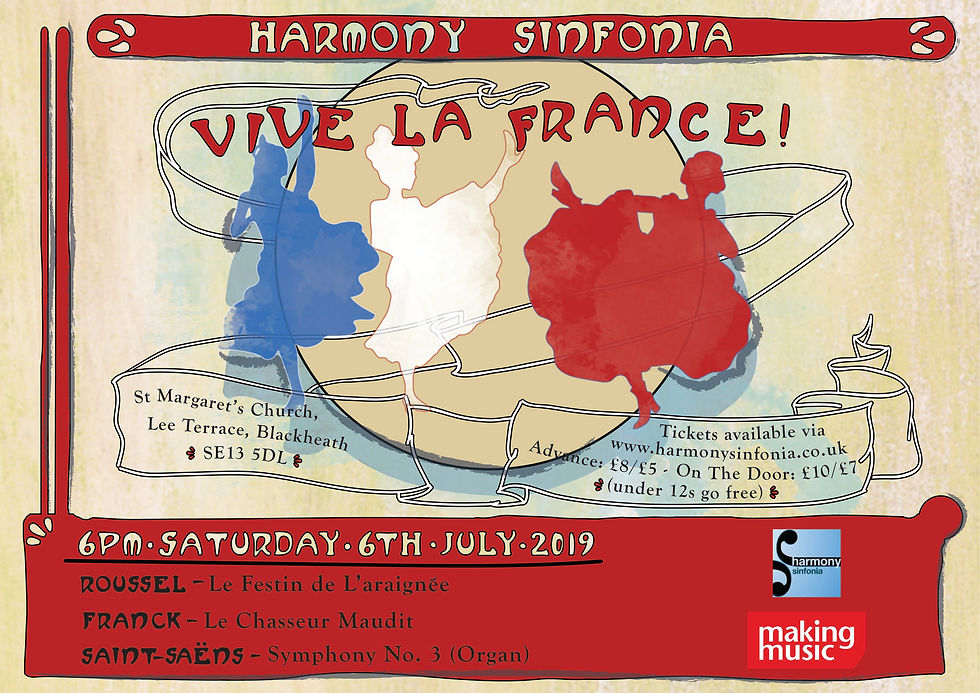Our Next Concert: Vive La France!
- Harmony Sinfonia

- Apr 18, 2019
- 3 min read

Check out the artwork for our next concert, Vive La France!
After a fantastic concert in March to celebrate International Women's Day and delve into some lesser-known repertoire, we are looking forward to our next project, our all-French composer programmed concert on Saturday 9 June, Vive La France!

Our Toulouse-Lautrec-inspired poster captures the spirit of France in a time of musical revolution, which mirrors our programme well.
We have La Chasseur Maudit (The Accursed Huntsman) by César Franck, completed in October 1882 and premiered the following March. This dramatic, exciting piece tells the story of the Count of the Rhine who defied the holy Sabbath and went hunting on a Sunday morning. This brings down upon him and terrible curse, and he is doomed to be pursued by demons and hellfire for eternity. Dark? Certainly, but the energetic, powerful brass creates an extraordinary atmosphere that has the listener on the edge of the seat throughout. Have a listen below of the Boston Symphony Orchestra's 1962 powerful recording:
Also on the programme is Le Festin de l'araignée (The Spider's Feast) by Albert Roussel. Roussel was unusual in that the bulk of his compositions were written quite late in life, after having served in the French Navy and on other ships for many years. His travels took him as far as China and he drew inspiration from these. Though his pre-naval career studies included music, he had at that time no thought of pursuing it as an occupation, preferring mathematics. While he was serving on the seas, he started composing, and was well thought of enough and received enough encouragement for him to quit and go into the world of composition.
Roussel's career can be roughly divided into two haves, the first of which was very heavily influenced by impressionism, and that is the style in which Le Festin de l'araignée was composed. It is a ballet set in a garden at twilight, and depicts many insects whose relative peace is disturbed by the titular spider who comes to catch her dinner. She succeeds in capturing a butterfly, but just as she is about to tuck in (spoilers!), she is killed by two praying mantises.
Le Festin de l'araignée was premiered in 1913, but the earliest image we can find of the ballet is from its revival in 1922 when Mado Minty was cast in the lead role of the spider:

The music is delicate and intricate, much like the insects themselves, and the evocative half-hour ballet is richly orchestrated with some beautiful solos. Have a listen to an extract here:
And finally we finish with Saint-Saëns' magnificent Symphony No. 3. Known as the Organ Symphony, its use of the organ is confined to two of the movements but is extremely effective and adds a rich depth to the music. This was the last symphony that Saint-Saëns ever published (though he wrote two more that have since been unearthed and recorded), and it was dedicated to his friend Franz Liszt upon his death just two months after the symphony's London premiere.
The music of this powerful symphony speaks for itself and needs little introduction, so here is the Orchestre de Paris giving it some glorious interpretation under the baton of Paavo Järvi with Thierry Escaich on the organ at the 2013 BBC Proms:
Come and join us for what is going to be an incredible performance in our gorgeous venue of St Margaret's Church in Blackheath - tickets available here!


